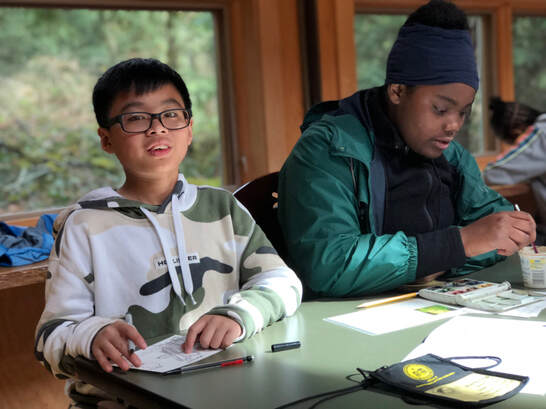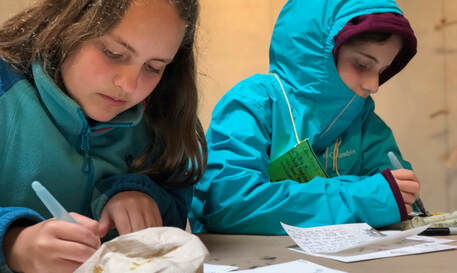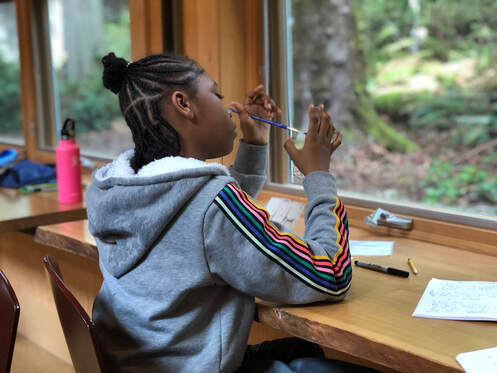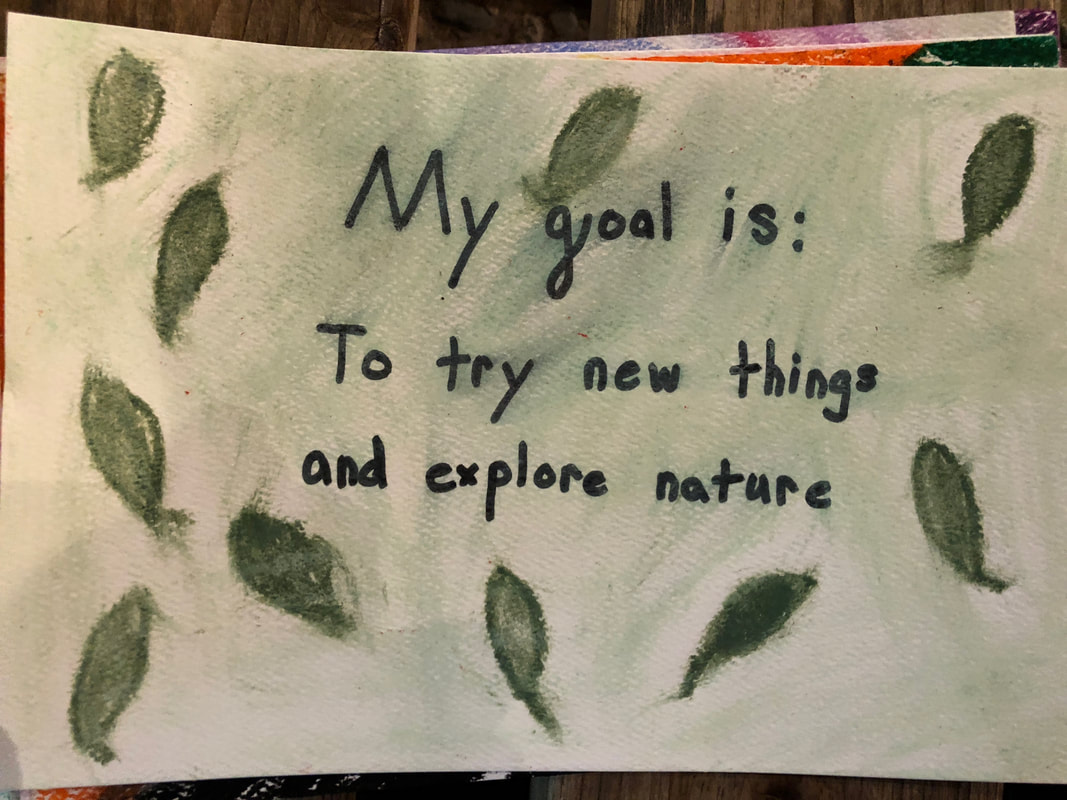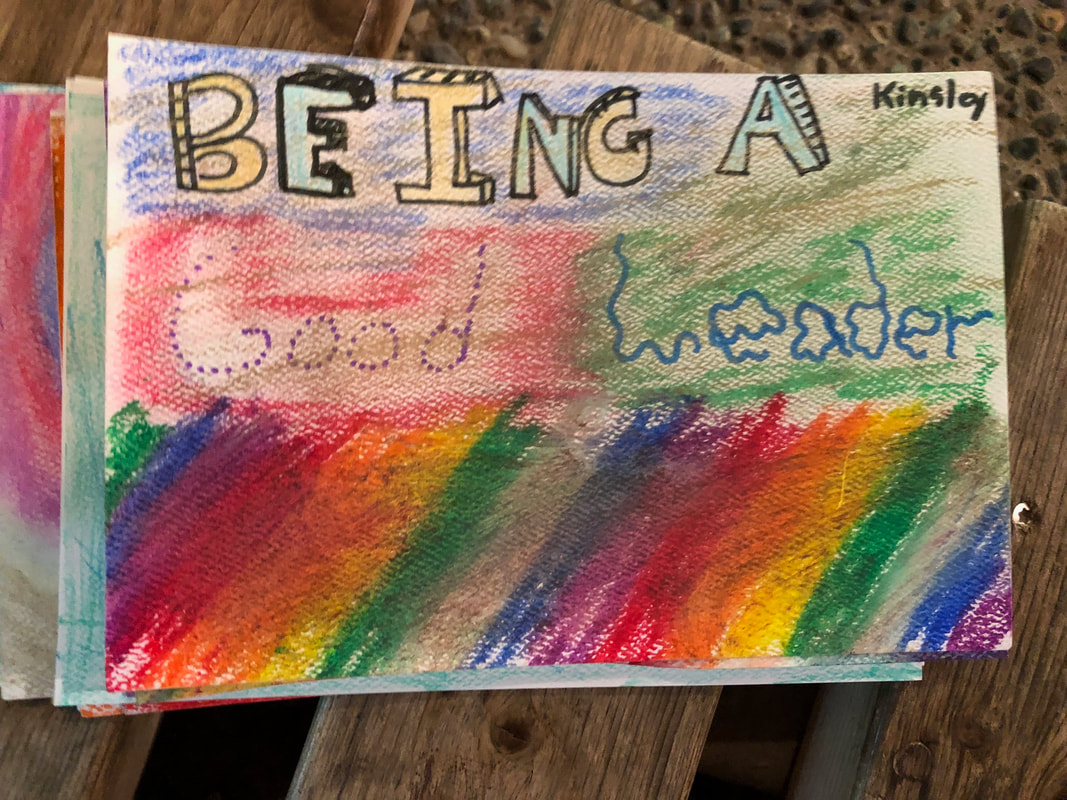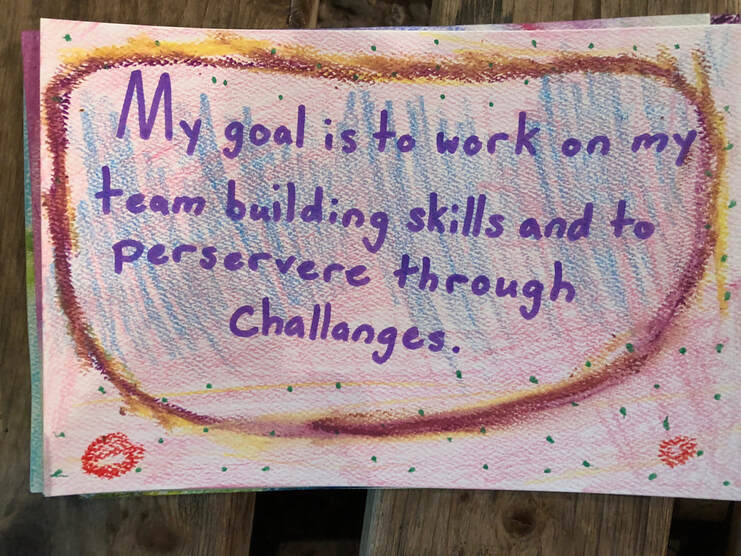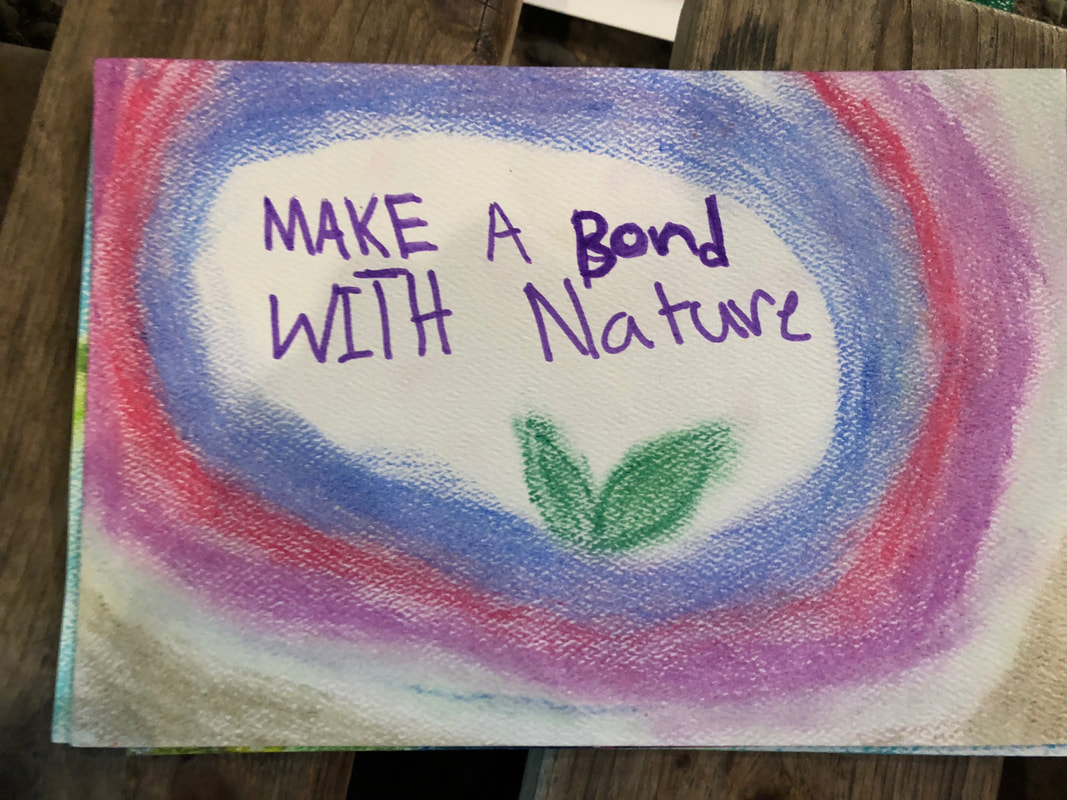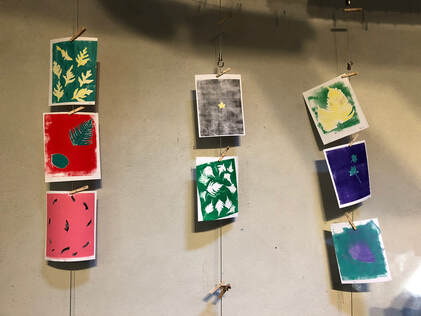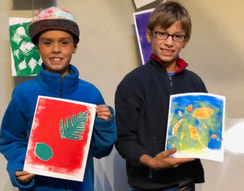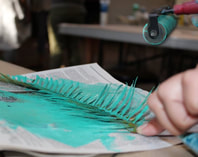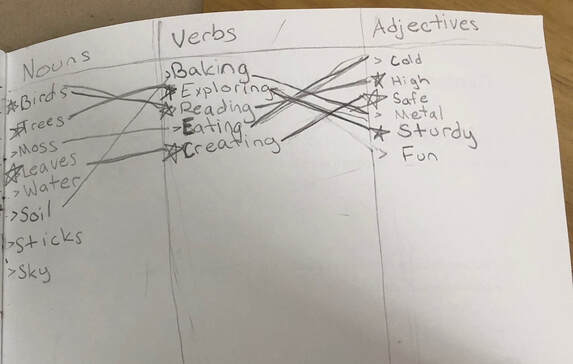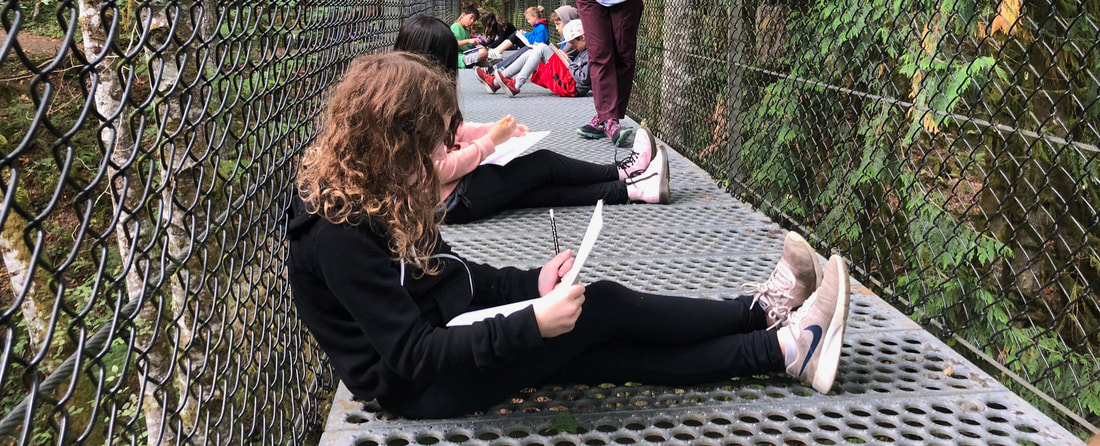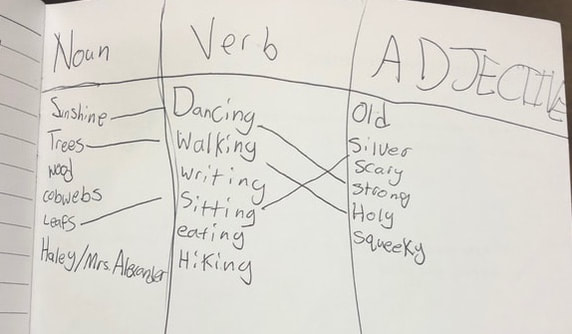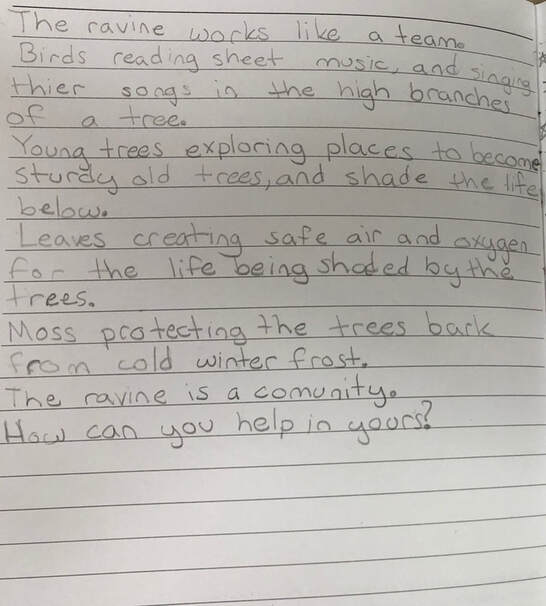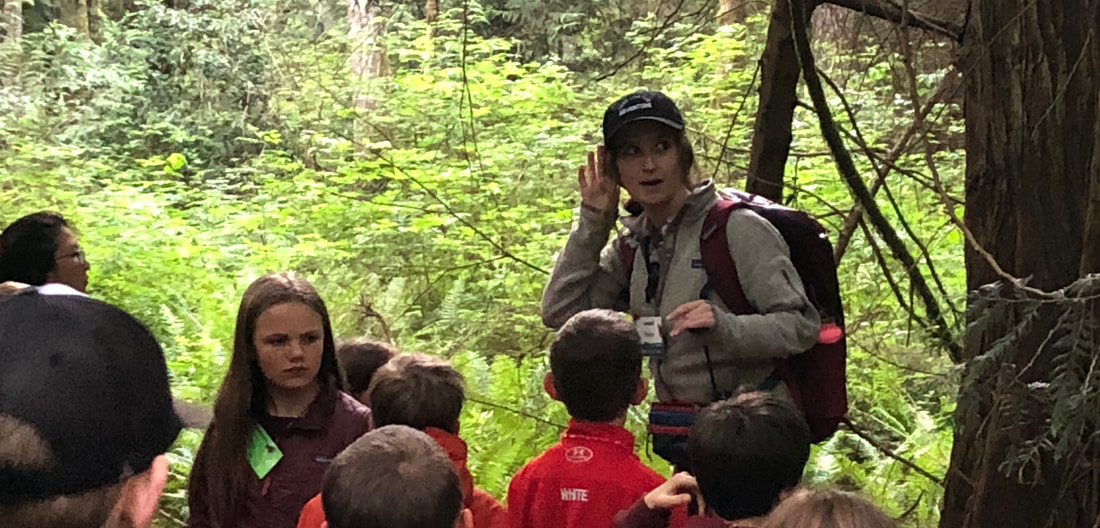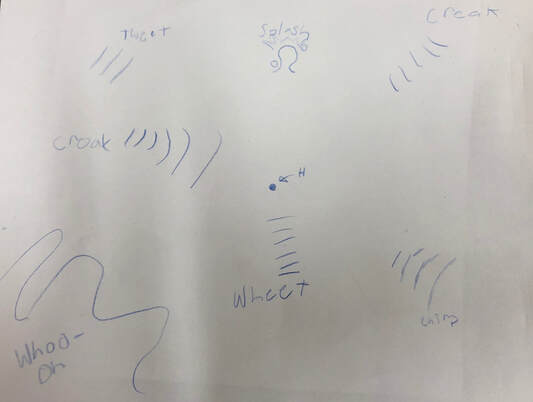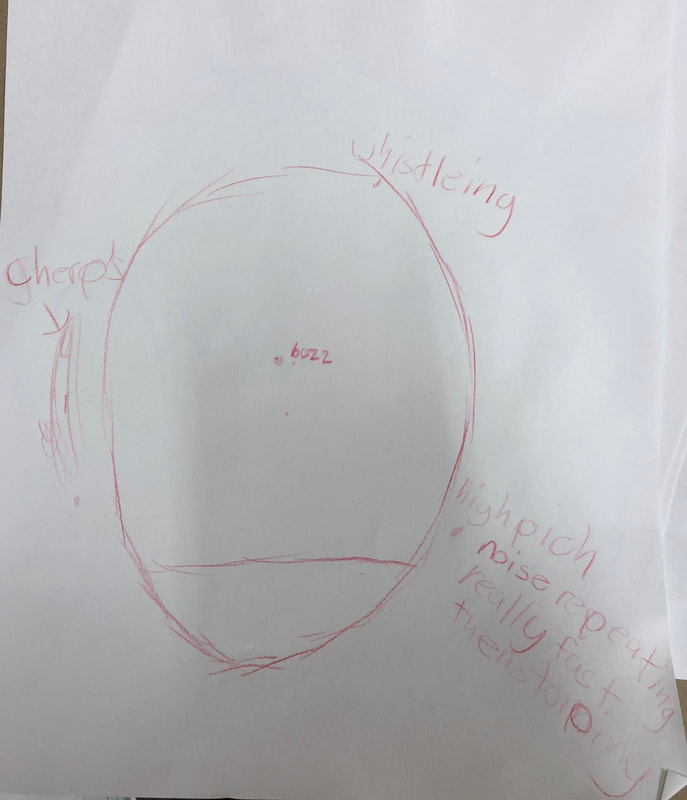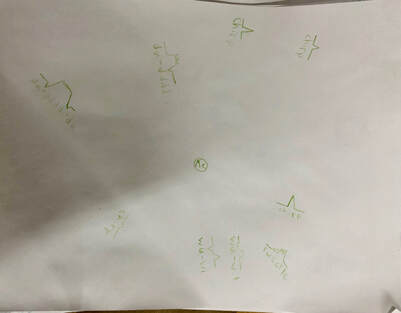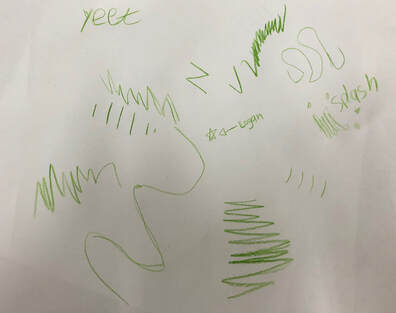Using Visual Arts to Facilitate
|
Students were prompted to set a goal for themselves that they hoped to accomplish during their four day environmental education experience at IslandWood. Students were invited to decorate their goals in any way they wanted, using pastel, marker, or colored pencil.
|
Studying the Natural World through ArtThe arts provide an accessible entry point for students to engage with and learn about the ecosystems around them. I often use visual arts and poetry as lenses through which students can investigate flora, fauna, habitats, and much more.
|
|
Nature Prints
Students are prompted to select a plant that they want to investigate. After making some preliminary observations, students are provided with resources to determine what their plant is. Finally, students learn to mix paint colors in order to create "Nature Prints" of their selected plant to take home with them. I encourage students to keep their prints, and to teach others what they learned through this activity. This allows students to transfer and communicate their learning to others within a different setting. |
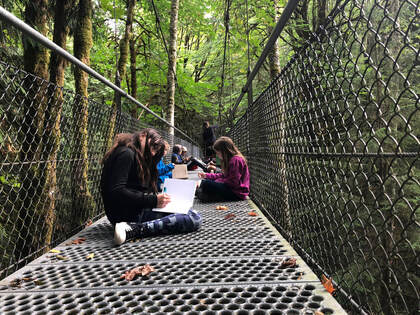
Observational Poetry
Through my teaching experience, I have found that many students hold a negative connotation when it comes to poetry. I am to make poetry more accessible to my students by providing scaffolding in my lesson. I always aim to facilitate this lesson in an outdoor space that is engaging for my students.
I prompt students to write down five nouns that they observe around them, five verbs that describe things they enjoy doing, and five adjectives to describe the location they are in.
Students then connect these words to create lines in their poem, describing their observations of their surroundings.
Through my teaching experience, I have found that many students hold a negative connotation when it comes to poetry. I am to make poetry more accessible to my students by providing scaffolding in my lesson. I always aim to facilitate this lesson in an outdoor space that is engaging for my students.
I prompt students to write down five nouns that they observe around them, five verbs that describe things they enjoy doing, and five adjectives to describe the location they are in.
Students then connect these words to create lines in their poem, describing their observations of their surroundings.
